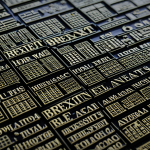Overview of IoT in Waste Management
The integration of IoT technologies in waste management is transforming how urban areas address waste challenges. This intelligent approach leverages connected devices to optimize waste collection and processing. IoT applications in this field cover a wide range, from smart bins to comprehensive waste management systems, facilitating more effective urban waste solutions.
Components Involved
Key components of IoT in waste management include sensors, data analytics platforms, and connectivity solutions. Sensors are crucial as they collect valuable data such as bin fill levels and temperature readings. Through data analytics platforms, this information translates into actionable insights for municipal authorities. Connectivity solutions ensure seamless communication between devices, enabling real-time updates and decision-making.
Also read : Unveiling the Future of Transport: The Impact of Magnetic Levitation Technology
Urban Sustainability
The importance of IoT in promoting urban sustainability cannot be overstated. By reducing waste management costs and minimizing environmental impact, IoT technologies support more sustainable cities. This integration leads to efficient resource use, ultimately enhancing the quality of urban life. Moreover, these urban waste solutions contribute to reducing carbon footprints by optimizing collection routes and reducing unnecessary waste pickups.
Consequently, IoT is paving the way for smarter, more sustainable waste management systems, positioning cities to meet future environmental and operational demands with increased efficiency.
Topic to read : Transform Your Nights: How Smart Bed Tech Boosts Sleep Quality and Health Monitoring
Benefits of IoT in Urban Waste Management
The integration of IoT technologies in urban waste management significantly enhances efficiency and develops novel strategies for resource optimization. By providing real-time data, IoT enables waste management operations to adapt swiftly and effectively to varying conditions. This leads to improved operational efficiency by ensuring timely waste collection and processing, thereby reducing the frequency of overfilled bins and missed pickups.
Moreover, IoT facilitates cost savings for municipalities by optimizing waste collection routes. By analysing data on bin fill levels and location, waste collection vehicles can plan shortest, most efficient routes, reducing fuel consumption and operational costs. This enhances the overall resource optimization strategy, as less fuel use and fewer trips contribute to decreased emissions and maintenance costs.
Furthermore, IoT enhances recycling and waste diversion strategies. Real-time monitoring allows for more precise sorting and separation of recyclables, significantly increasing the effectiveness of urban recycling programs. By collecting data on types of waste being disposed of, municipalities can design better educational programs tailored to improving citizens’ recycling habits and compliance. Thus, IoT’s real-time data capabilities not only increase efficiency and resource optimization but also pioneer innovative approaches to recycling and sustainability.
Real-World Examples of IoT Solutions
Implementing IoT solutions in waste management has proven transformative across various urban centers. In this section, we delve into noteworthy case studies showcasing successful implementations and their outcomes.
Case Study 1: Smart Waste Bins
In cities like Amsterdam, smart waste bins are revolutionizing waste collection. These bins are equipped with sensors that detect fill levels, transmitting data to municipal authorities for timely collection. Compared to traditional bins, smart bins drastically reduce overflows and optimise collection schedules, enhancing urban waste solutions.
Case Study 2: Fleet Management for Waste Collection
Barcelona uses IoT in fleet management for waste collection, resulting in notable efficiency improvements. By integrating GPS and sensors into waste collection vehicles, the city dramatically reduces travel routes, fuel consumption, and costs. This efficient strategy underscores the value of IoT technologies in urban waste management.
Case Study 3: Sensor Technologies in Waste Processing
Taipei’s waste processing facilities leverage advanced sensor technologies to sort and process waste more efficiently. Sensors monitor and streamline processing workflows, reducing manual labour and error rates. This shift from traditional methods illustrates how IoT-enhanced solutions can optimise resource management.
These case studies underscore the potential of IoT technologies to transform waste management practices, proving that with careful implementation, cities can enhance sustainability and operational efficiency.
Challenges in Implementing IoT Waste Management
Implementing IoT waste management systems presents several notable challenges, particularly regarding infrastructure limitations in urban environments. Many cities struggle with outdated infrastructures that cannot support the advanced connectivity required by IoT technologies. Without significant upgrades or investments, these limitations can hinder the seamless operation and deployment of devices necessary for effective waste management.
Data privacy and security concerns are also paramount when deploying these technologies. IoT systems continuously collect and transmit vast amounts of data, which has sparked fears over data breaches and unauthorized access. To mitigate these risks, robust security measures must be upheld to ensure that sensitive information remains protected, reassuring both stakeholders and the community.
Moreover, there is often resistance from stakeholders and community members regarding the adoption of new technologies. Concerns about job displacement, installation costs, and the potential for increased surveillance can create barriers to acceptance. For successful implementation, it’s crucial to engage these parties through transparent dialogue and education that explains the benefits and addresses their concerns.
Addressing these challenges is essential in fully realising the potential of IoT in waste management, paving the way for smarter, more efficient urban environments.
Future Trends in IoT Waste Management
As smart cities continue to evolve, innovative IoT technologies are set to reshape waste management. Emerging solutions show promise in enhancing urban sustainability and complying with evolving environmental regulations. These advancements create more dynamic systems, working in tandem with other smart city initiatives.
Among the pivotal technological advancements are self-optimizing waste bins and autonomous waste collection vehicles. The former uses sensors to assess and adapt to waste levels, while the latter employs AI for efficient route planning. Such innovations aim to reduce human intervention, streamline operations, and boost efficiency.
The integration of IoT with other smart city components, like energy grids and traffic systems, augments the efficacy of waste management. Collaborative systems can leverage shared data, optimizing resource use across urban environments. For instance, coordinating waste collection with traffic conditions minimizes fuel consumption and reduces emissions.
Additionally, regulatory frameworks increasingly favour technologies that promote environmental conservation. IoT-enabled waste management systems ensure compliance with such policies through precise monitoring of waste output and recycling rates. By staying ahead in these areas, cities can progress towards achieving more sustainable urban ecosystems.
With the development of sophisticated IoT applications, waste management in smart cities will become more efficient, environmentally friendly, and economically viable, paving the way for a greener future.





